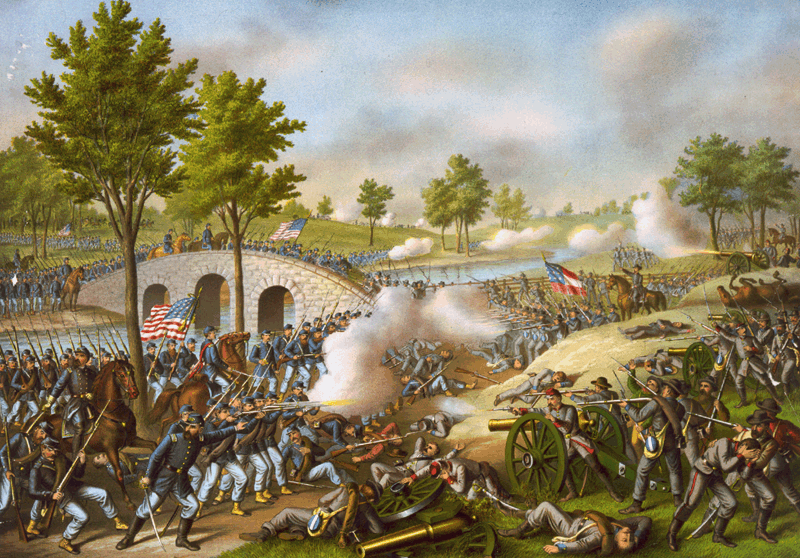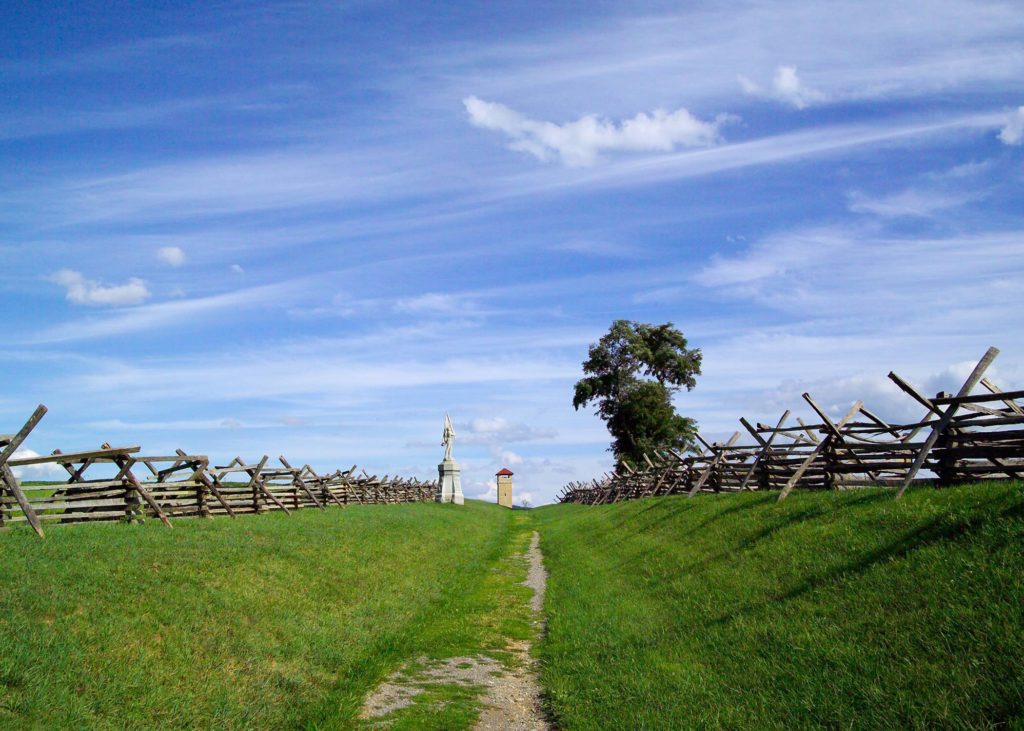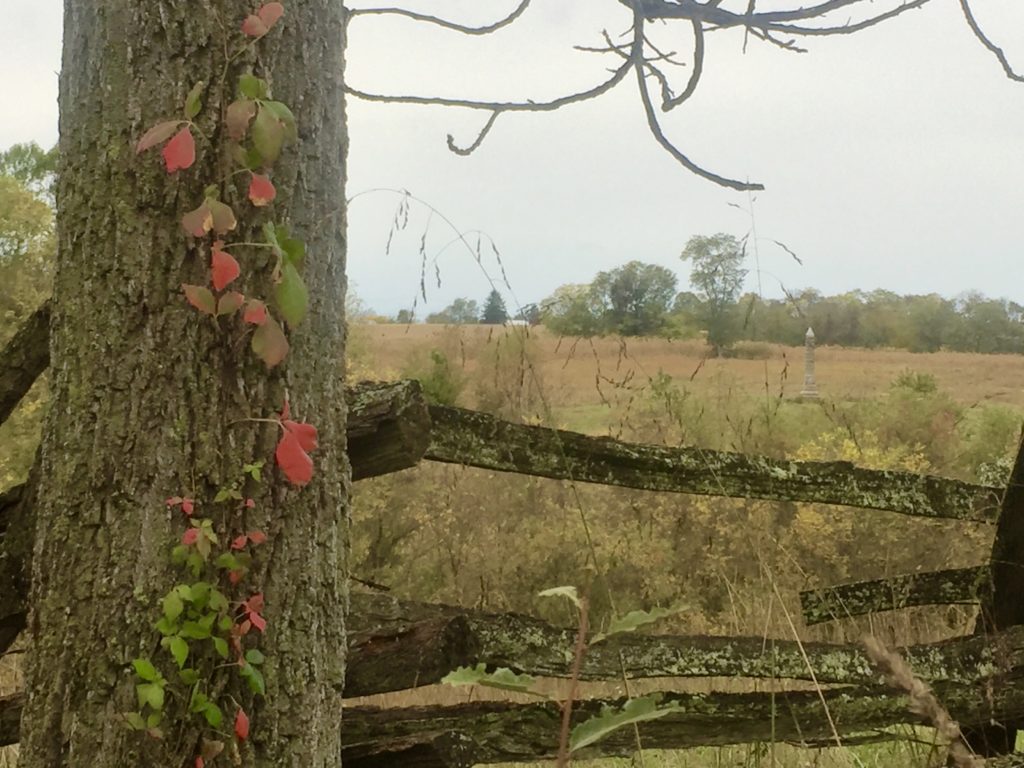
Tour: Maryland Campaign Part 3, The Battle of Antietam
Dates: October 25-27, 2019
Tour Leaders: Dr. Tom Clemens and Scott Hartwig
Reported By: John Bonansinga
Having missed the first two parts of this series due to family obligations, I was determined not to miss the finale of the series. I’ve been to Antietam at least a half a dozen times, including once with BGES on a staff ride program led by Tom Clemens. It’s a battle and field that I know well and was looking forward to the kind of give and take that can only be had with historians like Tom and Scott.
Friday, October 27, 2019
At Friday evening’s orientation, Tom and Scott brought the campaign up to September 16, one concentrating on the Confederate situation and the other on Army of the Potomac. There was a lively discussion of the finding of Special Orders 191 and their effect on the progress of the campaign. Many members of our group had already been on parts 1 and 2, South Mountain and Harpers Ferry, so these actions were touched on in the context of the coming battle.

Saturday, October 28, 2019
Saturday morning, three vans left Frederick for Sharpsburg. We followed the route of General McClellan, traveling over South Mountain into Boonsboro and on through Keedysville toward the village of Sharpsburg. Our first stop was the Pry house, which Dr. Clemens has proven was not McClellan’s headquarters but his battle command post and present home of the Museum of Civil War Medicine. Here, we discussed what George McClellan faced as he arrived on September 16. The present view is not as open as in 1862; however, the New York monument was visible and served as an orientation point when discussing McClellan’s instructions to Hooker.
The group then followed Hooker over the upper bridge and along the original Smoketown Road toward the field. We stopped briefly at the Poffenberger farm to set the stage, then moved through the North Woods and into the Bloody Cornfield. Much of the morning was spent covering the attacks of the First and Twelfth Corps and the Confederate counterattacks, which led to a bloody stalemate at the northern end of the field.
After a break for lunch, we walked through Sedgewick’s division attack and repulse in the West Woods. Tom then led the group across the highway that edges the battlefield to Hauser Ridge. I would guess that 99% of all visitors to the battlefield never set foot on this side of the highway. It’s always a treat to go to places that are not usually visited. The group then made our way back across the highway and went through the West Woods, up to the area of the Dunker Church where the vans waited to take us to dinner in Sharpsburg.

Sunday, October 29, 2019
Sunday morning brought a heavy rain, so the Blue and Gray group loaded into our vans armed with rain gear and umbrellas. Our first stop was the observation deck of the visitor’s center, where we reviewed the fighting on the field’s north end and set the stage for French’s attack on the Sunken Road. Amazingly, as Scott finished his comments, the clouds moved east, and blue skies and sunshine became the order of the day.
The next stop was the Mumma farm, where the group again left the vans and went cross-country following the route of French’s troops. After moving past the Roulette farm, we approached the Sunken Road approximately in the position of the Irish Brigade over 150 years before.
The terrain of the Antietam battlefield is best described as rolling farmland. It’s for this reason that only walking the ground can give you an appreciation for the decisions of the various commanders and the experiences of the soldiers. At the Sunken Road, in a space of less than 75 yards, one moves from complete cover from the Confederate position to one of complete exposure to what was a murderous fire. At the Irish Brigade’s point of advance, Scott shared several accounts written by the participants. Overall, the experience of walking in the footsteps of the Irish Brigade and hearing the men’s impressions in their own words was a highlight of the trip.
After a lunch of fried chicken and whoopie pies, it was back to the field. The first stop was the Newcomer house and barn. From this position in the area of the middle bridge, we walked with the U.S. Regulars and Tidball’s horse artillery toward Sharpsburg. From the position of Tidball’s battery, Cemetery Hill and the center of the Confederate position was in easy reach and perhaps a determined push in the center by McClellan would have ended the battle. Again, Scott and Tom’s knowledge and research told us the story how information moving up the chain of command led to the U.S. Regulars being pulled back to a position of support to the artillery instead of being reinforced and driving into Sharpsburg.
The last stop for the trip would be Burnside Bridge and the final Union attack and repulse. After recounting the attacks at Burnside Bridge, the group moved up the trail to the positions occupied by Union batteries supporting the Ninth Corps assault. Here, again, Scott used diaries and letters of the soldiers that fought here to give the group a feeling for the intense fighting and the experiences of the gunners that fought this ground. Finally, the group moved to the National Cemetery for a final reflection about the battle and the men who fought it.
Besides the attraction of touring the field with top notch historians, one of my main reasons for traveling with BGES is that I’ve yet to go on a trip where I do not go to a place I’ve never been before. This trip was no exception, as it was my first exposure to the Smoketown Road, Hauser Ridge, Tidball’s battery, and the artillery action above Burnside’s Bridge. I’ve been on other tours that were slightly more expansive than a car tour, involving a prolonged discussion at each stopping point. What I was looking for and received was a thorough canvassing of the battlefield including walking the lines of attack that the soldiers marched in 1862. This program delivered exactly that.
I cannot think of a better duo to lead this series. Tom provides so much perspective from his long-time attachment to the battle and his work with SHAF. And pairing him with Scott, who has researched this battle extensively for his books, is simply inspired. I’m not sure that there are two other people who have more combined knowledge.

